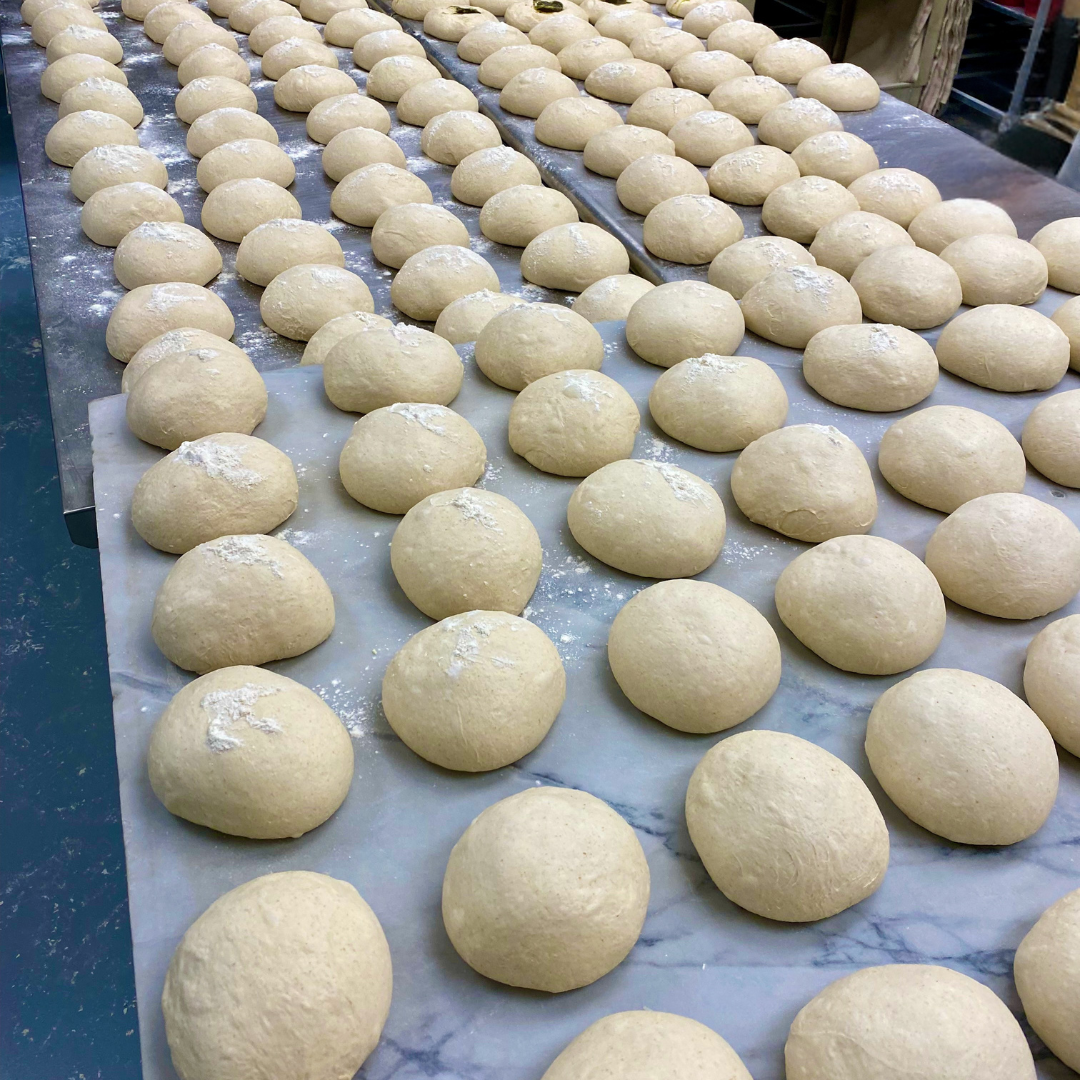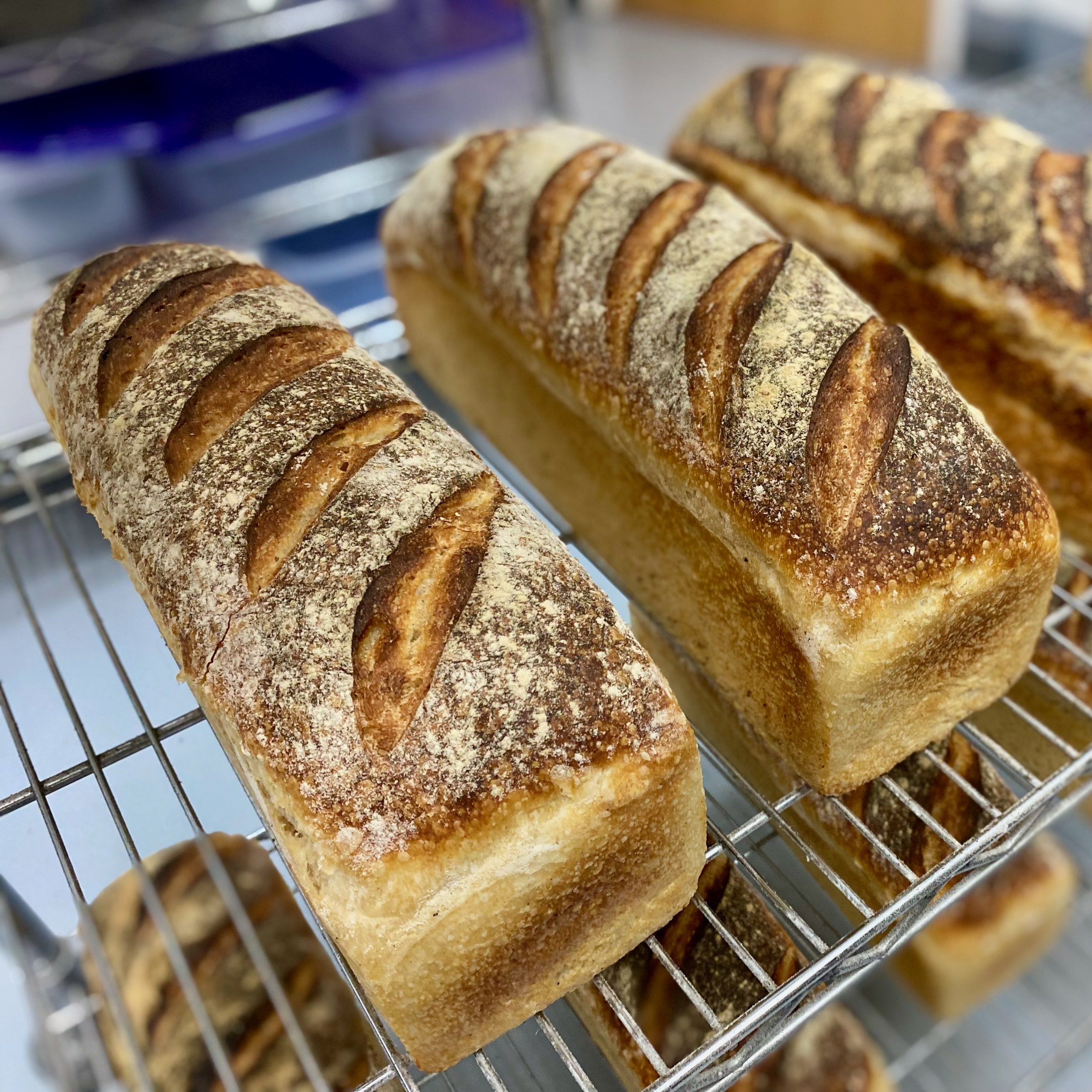What’s In Your Loaf?
Why Our Bread Beats the Big Brands (Hands Down)
Let’s cut to the crust.
Most bread on grocery store shelves, even the ones that look healthy, are loaded with stuff your body wasn’t built to process. Preservatives. Bleached flours. Unpronounceable additives. Bread that’s more chemistry experiment than nourishment.
At The Baker and the Cakemaker, we make bread the way it used to be made, before shortcuts and shelf-stabilizers took over. We use just a few simple, powerful ingredients, a 16-year-old sourdough starter, and time. That’s it. No tricks. No fillers. Just real bread.
The Hidden Ingredients in Commercial Breads
Ingredients from Northern California’s top commercial sourdough bread brands
Most commercial breads, even those that look “healthy,” are loaded with additives designed to speed up production or extend shelf life. Here are some common ingredients you’ll spot on store labels, and why they’re best left off your plate:
Enriched Flour: Highly processed, with nutrients stripped and replaced with synthetic versions like folic acid and iron.
Dough Conditioners & Emulsifiers: Used to soften dough and increase shelf life, often processed with chemicals.
Vegetable Oils (especially Soybean Oil): Highly refined, inflammatory, and often GMO-derived.
Cultured Wheat Flour: A “natural-sounding” preservative used to control pH and extend shelf life.
Ascorbic Acid (synthetic Vitamin C): Used as a chemical dough strengthener, not a nutritional benefit.
Thiamin Mononitrate: A synthetic form of vitamin B1, added back into processed flour during "enrichment" because the natural thiamin was destroyed when the wheat was stripped of its bran and germ. If it’s on the label, the bread likely uses highly refined flour.
Grain Vinegar: Can be derived from GMO corn or wheat and used to manipulate flavor.
High Fructose Corn Syrup and Added Sweeteners: Found even in some “savory” breads, used to improve browning or used to compensate for blandness caused by low-quality ingredients, short fermentation times, or lack of flavor development.
Whey: A dairy byproduct that may cause sensitivities, and doesn't belong in real sourdough.
You don’t need to be a chemist to know: if your bread label looks like a science experiment, it’s probably not doing your body any favors.
Many of these ingredients are linked to inflammation, digestive disruption, and metabolic dysfunction. This is the stuff we’ve all gotten used to—without realizing it.
You don’t need to memorize the science. Just check the label. If it reads like a lab sheet, you deserve better.
What You’ll Find in Our Loaves
✅ Organic Unbleached & Unenriched Wheat Flour
✅ Water
✅ Sea Salt
✅ Sourdough Starter (16 years old and full of local microbes)
(+ Flax, rosemary, olive oil, pumpkin seeds, or polenta in some loaves)
🚫 No preservatives
🚫 No dough conditioners
🚫 No added sugar
🚫 No seed oils
🚫 No junk, ever!
Don’t believe us? Check out our ingredient list here!
The Gut-Health Advantage
Real sourdough isn’t just tasty—it’s functional.
Our fermentation process helps:
✔ Break down gluten for easier digestion
✔ Lower phytic acid (so your body absorbs more minerals)
✔ Feed your good gut bacteria with prebiotics
✔ Reduce bloating and blood sugar spikes relative to eating non-fermented bread
This isn’t a health trend. It’s old-world food science.
Use Your Gut (Literally)
Next time you’re in the bread aisle, take a second and flip a bag over. What do you see? A long list of ingredients you don’t recognize and cannot pronounce, or a handful of real ones?
You don’t have to be a nutritionist to tell the difference. Trust your instincts. Use your judgment. If the label looks sketchy, it probably is.
This Is Bread That Loves You Back
We don’t make bread to check boxes. We make it to feed people. To nourish bellies and microbiomes. To bring flavor, crunch, chew, and joy back to the table.
Go ahead—toast it, sandwich it, tear it open while it’s still warm.
You’ll taste the difference.
You’ll feel the difference.






